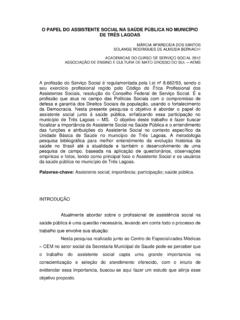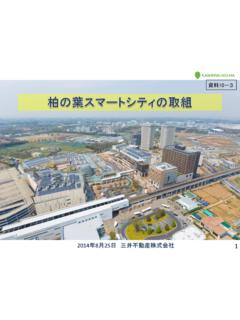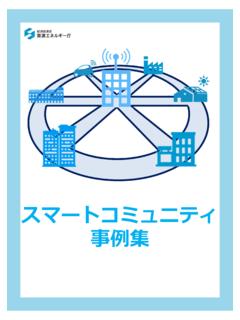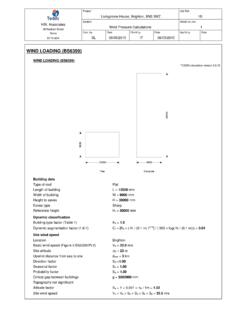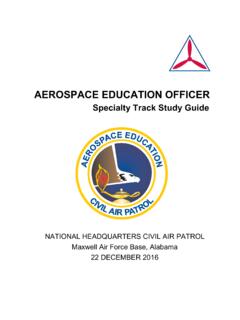Transcription of ACTION RESEARCH TOOLKIT - AEMS - Arts Education in ...
1 ACTION RESEARCH . TOOLKIT . ARTS Education . Dr. Richard A. Disharoon Board of Trustees Arts Education in Maryland Schools Alliance WHY AN ACTION RESEARCH TOOL KIT? The Arts Education In Maryland Schools Alliance: recognizes the critical role of teachers in advocating for their school programs. wishes to support their efforts to establish and maintain the crucial role of the arts in the Education of every child. The purpose of the ACTION RESEARCH Tool Kit, published in print and electronically, is to encourage arts educators to become researchers who are ..committed to taking ACTION and effecting positive educational change based on their as opposed to the goal of traditional researchers to just report their conclusions to others. (Mills, p. 3). The AEMS Alliance will establish a repository of ACTION RESEARCH projects.
2 These projects will serve as reference points for teachers new to ACTION RESEARCH and will provide ideas for teachers to adaptation or replication tailored for teachers individual situations. WHY SHOULD I ENGAGE IN ACTION RESEARCH ? Teachers engage in ACTION RESEARCH to Improve instruction. ACTION RESEARCH provides teachers with a philosophy and practice that allows them to systematically study the effects of their teaching on student learning. (Mills, ). Advocate for their program. The AEMS Alliance strongly believes that RESEARCH carried out in local schools provides a powerful argument for the importance of arts Education as a central component of the Education of every child in those schools. ACTION RESEARCH TOOL KIT, P. 2. ACTION RESEARCH IS DIFFERENT FROM QUANTITATIVE.
3 RESEARCH . ACTION RESEARCH does NOT: Require formal RESEARCH design. Require random assignment of students to a control group and an experimental group Disrupt normal classroom routine. WHAT IS ACTION RESEARCH ? ACTION RESEARCH involves posing a problem, devising a strategy, and sharing results with parents and professionals. ACTION RESEARCH is any systematic inquiry conducted by teacher gather information they teach and how well their students learn.. (Mills, p. 5). ACTION RESEARCH is done by teachers for themselves; it is not imposed on them by someone else. (Mills, ). ACTION RESEARCH is: Situational Involves planned ACTION and intervention through a spiral of deliberate steps Collaborative Integrated easily into daily lesson planning. Evaluation of the lesson includes recording teacher observation and interpretation of the selected aspect of improving instruction.
4 The teacher uses this information as formative and summative assessment of the results of the investigation. ACTION RESEARCH TOOL KIT, There are two categories of RESEARCH : quantitative and qualitative. Quantitative, or formal, RESEARCH requires administering a treatment . under control of a small number of variables and using numbers to report cause and effect relationships. Qualitative, or ACTION RESEARCH , uses descriptive techniques such as observation and interviews to report results and develop an ACTION plan. The ACTION plan may become part of the instructional program or lead to additional RESEARCH involving a modification of the original area of focus. In some cases it is appropriate to combine quantitative and qualitative RESEARCH or traditional and educational RESEARCH techniques.
5 An example of combining quantitative and qualitative techniques example is using standardized test scores (quantitative) and observation techniques (qualitative). Results would be reported in a combination of numbers and interpretation of observations. Combining traditional and educational RESEARCH techniques occurs when using two intact groups. For example, a teacher/researcher might decide to compare the achievement of two third grade classes. One class receives the treatment ; the other class receives regular . instruction. This eliminates the control/experimental group technique without random assignment to groups as defined by certain variables. DO I WORK ALONE OR WITH OTHERS? ACTION RESEARCH projects can be carried out alone or in collaboration with colleagues.
6 The steps involved in organizing an ACTION RESEARCH are outlined in Appendix A. Simply put, ACTION RESEARCH involves posing a problem, devising a strategy to solve the problem, using results to improve instruction, and reporting results for the benefit of others. (Examples of individual ACTION RESEARCH projects will be found in Appendix B.). ACTION RESEARCH TOOL KIT, P. 4. Although the steps in Appendix A are appropriate for collaborative ACTION RESEARCH , creating a learning community to identify and attain common goals requires additional considerations: Learning to know each other (building community). Sufficient dialogue to clarify and identify a common area of focus (for example, a multi arts focus identified by arts educators or a general instructional focus determined by classroom teachers and arts educators).
7 Reaching agreement of a treatment . Sharing observations and interpretations as the process unfolds (formative assessment). A thorough description of the group process developed by the Minnesota Arts Best Practice Network (sponsored by the Perpich Center for Arts Education ), Critical Links: A Professional Inquiry Process, is available on line at. The process is indexed to Critical Links: Learning in the Arts and Student Academic and Social Development published by the Arts Education Partnership. This publication is an excellent source for areas of focus for individual or group RESEARCH . SOURCE CITED: Mills, Geoffrey. ACTION RESEARCH : A Guide for the Teacher Researcher. New Jersey: Pearson Education , Inc., 2007. APPENDIX A. STEPS INVOLVED IN ORGANIZING AN ACTION RESEARCH .
8 PROJECT. AREA OF FOCUS STATEMENT. The purpose of this study is to describe the effects/the impact of DEFINE VARIABLES. A variable is something in your project that is subject to change. For example, it could be teaching style or curriculum changes. Represent clearly what the variables mean to you . DEVELOP RESEARCH QUESTIONS. Questions should help to define the area of focus statement. See examples in appendix. DESCRIBE THE INTERACTION OR INNOVATION. Describe what you are going to do to improve the situation. DESCRIBE MEMEBERSHIP OF THE GROUP. Why are these members important? Any discipline problems? What is the age/grade level? DESCRIBE ANY NEGOTIATIONS TO BE UNDERTAKEN. Do you need permission from administrators? Parents? Central office? DEVELOP A TIMELINE.
9 Who will be doing what and when? i DEVELOP A STATEMENT OF RESOURCES. Identify materials needed. If you need money, what is your source? What will be the source of curriculum materials? DEVELOP DATA COLLECTION IDEAS. Test scores, attendance, records, portfolios DATA ANALYSIS AND INTERPRETATION. Identify appropriate data analysis techniques for your project Identify appropriate data interpretation techniques Review what you have learned and draw conclusions REPORTING RESULTS. With whom will you share results? How and in what setting? Will you prepare a written report and/or a PowerPoint presentation? ii APPENDIX B. SAMPLE ACTION RESEARCH PROJECTS. These ACTION RESEARCH projects have been adapted to the steps described in Table 1. The AEMS Alliance is grateful to the teachers who shared their RESEARCH .
10 DRAMA. A YEAR IN THE BEEHIVE: FROM BUZZING TO MAKING HONEY. CANDACE ELLEN MARSHALL, KENSINGTON-PARKWOOD. ELEMENTARY SCHOOL, OCTOBER 2006-MARCH 2007. AREA OF FOCUS STATEMENT. The purpose of this study was to evaluate the effect of drama on developing social skills in first grade children. The RESEARCH cited in this project states: Accomplishment of the schools has been impeded by social, emotional, and behavioral problems of children.. (Borman and Schneider, 1998). Reading, writing, math are at the core of primary curriculum, but just as important, if not more critical, to students eventual success in the world beyond the classroom, is the teaching of social skills. Social skills include, but are not limited to, taking turns, praising, sharing materials, resolving conflicts, and celebrating successes.

